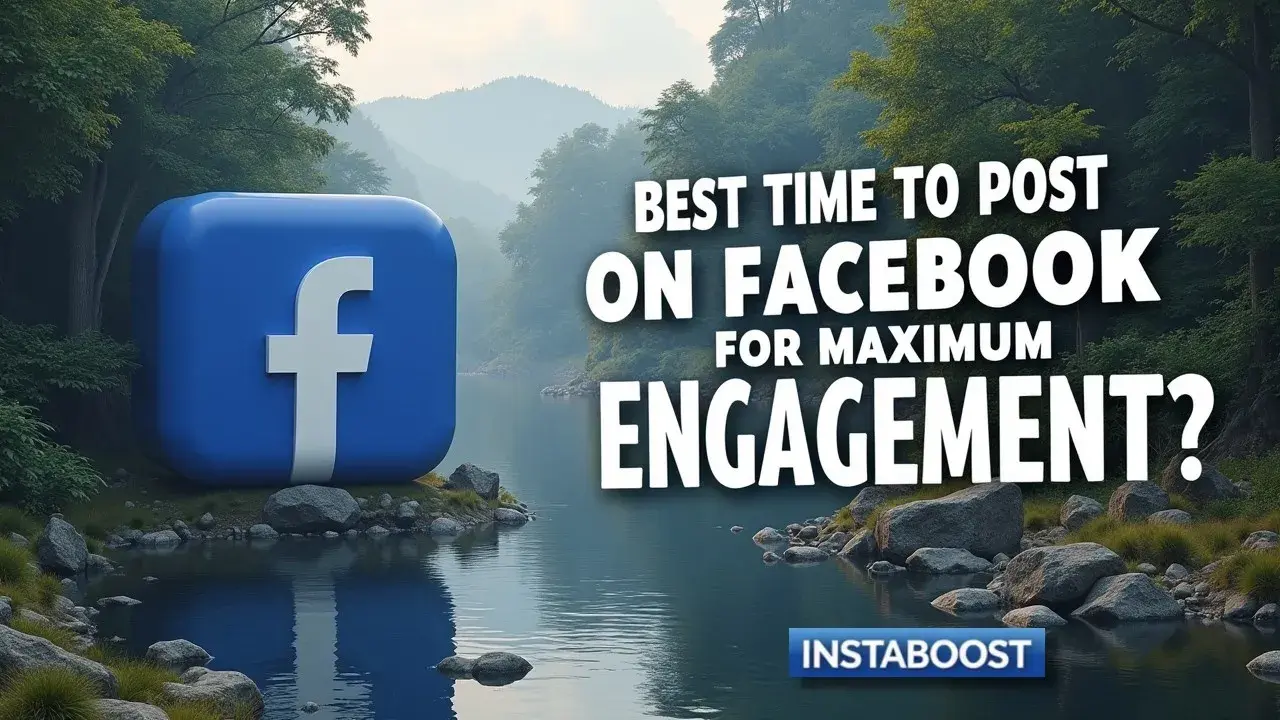Best Time to Post on Facebook for Maximum Engagement?
Posting when audience activity clusters typically yields higher engagement. Focus on the first hour after publishing, because early interactions often forecast steady performance over time. Consistent timing helps create a habit among followers, while testing several windows across a full week can reveal a repeatable sweet spot. The smart path is to identify those clustered peaks and stick to the slot that reliably delivers early lift.
Timing That Triggers the First-Hour Lift
Posting when your audience clusters online matters because Facebook’s feed rewards early signals. Quick reactions, real comments, and saves in the first hour tend to predict steady reach. That’s why “best time to post on Facebook” isn’t a single clock. It’s a pattern you find by matching timing to intent and behavior.
Start by checking when your followers are active in Meta’s professional dashboard, then layer in context like weekday and weekend routines, mobile commute windows, lunch breaks, and late-evening scrolls. Your aim is early momentum from the people most likely to stop the scroll – existing fans, recent engagers, and lookalike segments.
Start by checking when your followers are active in Meta’s professional dashboard, then layer in context like weekday and weekend routines, mobile commute windows, lunch breaks, and late-evening scrolls. Your aim is early momentum from the people most likely to stop the scroll – existing fans, recent engagers, and lookalike segments.
It works best when your timing lines up with posts that invite a response, such as questions, short polls, or creator collabs that spark real replies, supported by a light, reputable boost targeted to warm audiences, the nuts-and-bolts of which you can keep tidy with tools like Facebook promotion made simple when your analytics already show lift. Paid promotion is a smart lever when it lifts a post already showing healthy retention signals and is tracked with clean analytics and tight safeguards. Build a testing loop. Publish across 3 to 4 time windows in a week, keep the creative constant, and measure the first 60 minutes – view duration, comment quality, tap-throughs, and saves – not just likes.
If one window keeps delivering higher comment velocity and watch time, use it to teach the algorithm who cares most. Consistency compounds. A predictable cadence trains your core audience to expect you, which raises the chance they’ll interact quickly. When your timing fits audience clusters and your feedback loop stays clean, you get repeatable engagement without chasing gimmicks. The result is practical reach growth you can forecast and scale, especially when you coordinate timing with targeted promotion and creator partners who bring their own active windows.

Proof Beats Lore: Data That Grounds Your Posting Clock
Behind most wins is a simple idea that gets tested. If you want real Facebook engagement, treat timing as a hypothesis you can measure, not folklore. Run a two-week testing loop. Cluster posts in three adjacent 60 – 90 minute windows that bracket when your audience usually shows up, then compare first-hour reactions, meaningful comments, and saves. Those retention signals create the early momentum the feed amplifies. Use a qualified analytics setup – native insights plus a reputable scheduler with clean UTM tagging – so you can separate timing effects from content quality, and remember that vanity boosts, whether through giveaways or things like buy Facebook group members, can obscure whether the window itself is doing the work.
If you occasionally layer in a high-fit creator collab or a small, targeted promotion during your strongest window, you can see whether paid accelerants compound organic lift or just mask weak timing. Treat seasonality and local time zones as variables. Shift your windows when school terms, holidays, or live events change behavior. For brands across regions, split by audience segment and schedule per locale instead of chasing a single “best time to post on Facebook.” The credibility move is to publish consistently once you find a sweet spot. Habit formation helps your core audience prime the first hour without extra spend. When results wobble, audit for comment quality – real back-and-forth beats one-word replies – and for saves or shares that signal retention. This is where search intent meets timing. People asking “how often to post on Facebook” miss that cadence without clustered audiences dilutes signals. Your edge stays simple and repeatable. Measure the first-hour lift, lock the strongest window, and revisit it quarterly with a fresh test to keep your advantage current.
Elastic Timing: Build a Feedback Loop, Not a Folklore Clock
A strategy that can’t flex isn’t strategy. Treat Facebook timing like a live system: set a window, watch the first hour, and adjust. Start by locking two anchor windows on weekdays where your audience historically clusters, then float a third probe window across the week. Keep posts consistent enough to compare, and keep your analytics clean with UTM tags, consistent post types, and one clear call to action so first-hour lift is attributable.
If a window drives reactions without comments, pair it with creator collabs or a specific prompt that invites replies. If comments are strong but saves are thin, tighten the hook and add a carousel or a short video that rewards rewatching. When you amplify, use targeted promotion sparingly and through reputable placements, since paid that mirrors organic signals outperforms any shortcut like boost reach: buy Facebook likes in sustaining real engagement. Rotate formats to keep retention signals fresh, but avoid changing multiple variables on the same day.
Timing tests need safeguards. On weekends, post slightly earlier than your weekday sweet spot because people often browse before errands. Verify with first-hour comments and saves rather than likes alone. Run a four-week cadence: week one finds candidates, week two crowns a leader, week three stress-tests against a new probe, week four repeats with seasonal adjustments. The non-obvious play is coordinating timing with audience micro-habits you will not see in Page Insights – newsletter send times, community drops, partner posts – so your content rides existing attention spikes. The best time to post on Facebook is not a mythic minute. It is a moving window your testing loop keeps tuned, producing reliable early momentum and steady engagement over time.
Myth Hours vs. Your Hours
This post is powered by caffeine and a few questionable choices. If you’re still chasing last year’s “best time to post on Facebook” charts, you’re borrowing someone else’s audience, content mix, and algorithm moment, and you’ll likely pay with your reach.
The pushback is simple: global averages flatten your local truth. One niche with a high-intent audience spikes at lunch, another at 9 p.m. after kids’ bedtime. The smarter move is to test timing against behaviors that actually compound reach – early momentum, meaningful comments, saves, and shares from people who stay with the post. Cluster your posting windows and pair them with creator collabs that concentrate qualified eyeballs in the first hour, and use modest, well-targeted promotion from a reputable partner when your content is already converting organically, the kind of lift people often chase with buy views to grow Facebook page narratives that only make sense if they reinforce what’s already working.
Paid lift works when it amplifies a real signal, not when it tries to replace one. Keep the testing loop clean with a consistent post type, a single call to action, and UTM-tagged links so you can attribute first-hour lift without guesswork. If your anchor windows underperform for two consecutive weeks, rotate your probe window, not your strategy. Timing works when it matches intent, content energy, and retention signals. Otherwise you’ll read noise as pattern. One more edge that matters early: comment velocity beats raw likes. Seed an authentic discussion with one specific prompt, then reply fast to deepen the thread. Those interactions teach the feed your post holds attention beyond a quick tap. The result isn’t a folklore clock. It’s a living schedule you can defend with numbers and reuse for reliable engagement.
From Clock-Watching to Compounding: Make Timing a Growth Asset
You don’t need certainty. You need motion. Treat the “best time to post on Facebook” like a compounding habit, not a trivia answer. Pick two reliable weekday anchors, keep a floating probe, and run a simple testing loop that rewards early momentum with more reach. The engine is straightforward: clean UTM tags, consistent post types, and one clear CTA so first-hour signals are easy to read.
Then use qualified accelerants when the data says go. If a post earns saves, substantive comments, and 3-second views in the first 30 – 60 minutes, that’s your cue to add a small, targeted boost to matched audiences or spark creator collabs that extend comment threads – measured against view-through and assisted conversions, not vanity spikes. Reputable scheduling tools help you hit windows without breaking cadence, and the lift tends to come from fit – audience clusters, not folklore charts, and some teams even treat social syndication partners the way they treat timing probes, alongside utilities such as buy reposts to grow on Facebook as a controlled variable rather than a shortcut.
Run light, repeatable experiments across weekday bands with one weekend probe. Keep the budget elastic so winners get air and middlers yield learnings. Fold findings into a weekly timing map, prune dead slots, and protect the two anchors that consistently deliver retention signals. When seasonality tilts behavior – holidays, launches – move your probe first, not your anchors, and watch the first hour like a heartbeat monitor. Over a month, this turns timing into a predictable asset. You’re not guessing – you’re compounding. And when you want to accelerate, choose reputable partners, clear goals, and safeguards like frequency caps and comment moderation so paid distribution amplifies what’s already resonating. That’s how timing stops being folklore and becomes a growth loop you can reuse, forecast, and scale.















